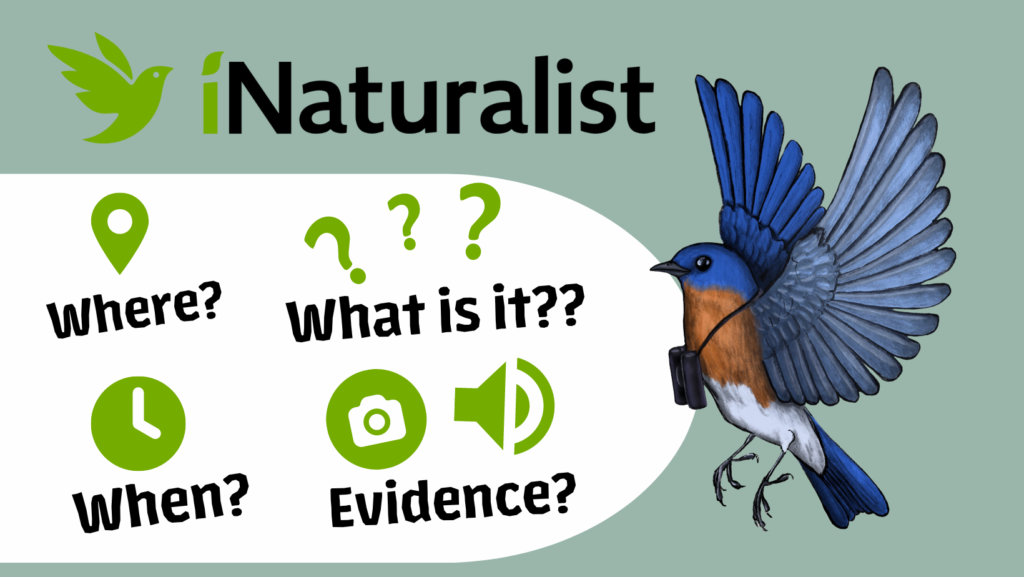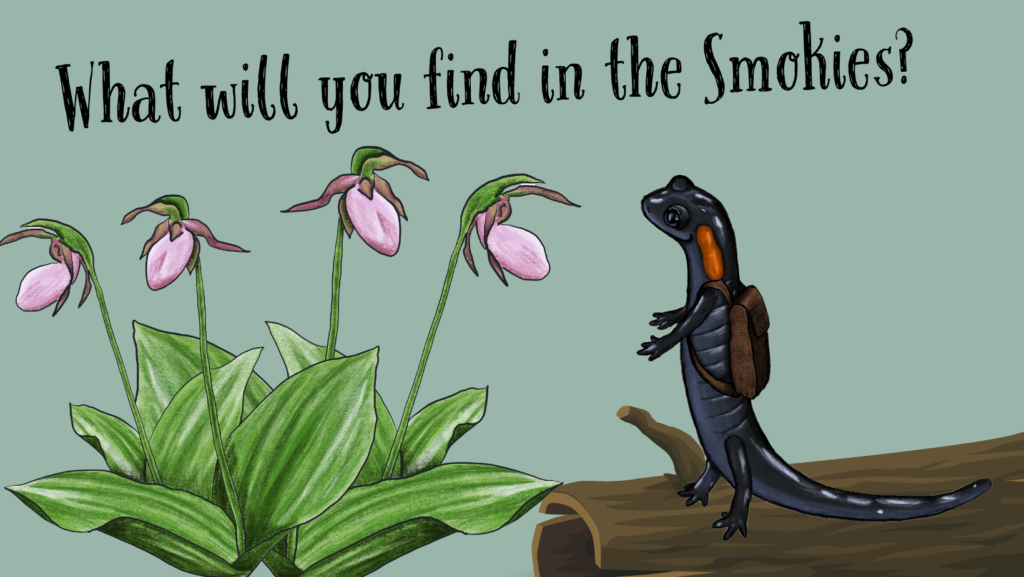
Smokies Most Wanted: Turning community science into a fun experience for all ages
iNaturalist is a free app that can be used to record any animal, plant or other lifeform. It’s easy to use and a great way for your family to learn more about the natural world and contribute to community science.
Why iNaturalist?
- Use it anywhere in the world
- Learn about nature
- Participate in community science
Smokies Most Wanted
DLiA has created a program called Smokies Most Wanted, so that park visitors can participate in collecting valuable data for the All Taxa Biodiversity Inventory (ATBI) by using iNaturalist.
For those wanting a real challenge, check out our Smokies Most Wanted list of birds, plants, insects and more for which DLiA needs additional iNaturalist observations in the park.

How do the observations help the park?
Observations help the park to predict where some species may occur, identify new park records, make conservation decisions and learn more about the importance of biodiversity!
Tips for making useful observations
iNaturalist is a great way to learn about nature with the whole family, but how can we make sure that we are contributing ‘good data’ and observations?
Get quality photos
It is good to let your children take photos, but you should make sure that the photo is good quality for identification purposes. You may submit up to 4 photos with every observation. Talk to them about the features of the plant or animal that you want to capture for identification, for example, getting a photo of the flower and the leaf.
Location Settings and Cell Service
Make sure that your location services on the app are turned on. Even if you are out of cell range, you can still take photos and share the observation.
Record a sound or signs of animals
Record sounds in nature, like birds, frogs or insects. If you don’t know what they are, someone on iNaturalist may be able to suggest an identification. Learn more about birds and identify songs on this free app by Cornell University: Merlin Bird ID
You can also make observations of animal signs, like scat, tracks, insect galls, feathers or nests.
Obey park laws and leave no trace
Make sure that you know all of the rules and regulations of the area that you are going to be visiting. Using iNaturalist with children is a great opportunity to talk about how we can record and document life in nature, but we also have a responsibility to help protect plant and animal habitats by staying on the trails, not stacking rocks in the waterways or picking live plants.
Parking tags are now required in Great Smoky Mountains National Park. Visit their website for more information: Smokies Park it Forward
Important privacy Information: Educators working with younger kids need to keep in mind that the Children’s Online Privacy Protection Act of 1998 means we can’t allow people under the age of 13 in the United States to create accounts without parental approval. This restriction is also reflected in our Terms of Service. As of June 2019, we do have a pathway for parental approval for accounts of children under 13, but it requires a small donation to verify identity.
Let’s get started!
Explore existing observations before introducing the app to children and students
iNaturalist recommends exploring existing observations with children and students to see what others have been seeing in the neighborhood or their favorite places to visit before hopping on the app. Tap into their curiosity by starting with a few questions to look up on inaturalist.org, for example, where have their favorite animals have been seen or where are migrating birds being seen right now. Exploring the data on inaturalist.org is a great way to get children of all ages excited about community science!
Make a photo “scavenger hunt” list
Going out on a hike or a walk around the neighborhood? Make a ‘photo scavenger hunt’ list of things that you want to see and record. This can be adapted to a variety of age groups. Your list may include different plants and animals, but it also could include some fuzzy, something tiny, something shiny, something smooth, etc.

Here are some suggestions for fun, family friendly trails in GSMNP
1. Little Bottoms Trail and Rabbit Creek at Abrams Campground
2. Mingus Creek Trail near Smokemont Campground
3. Big Fork Ridge and Rough Fork Trail in Cataloochee Valley
4. Andrew’s Bald Trail at Clingman’s Dome Parking lot
5. Quiet Walkways and GSMNP Nature Trails- See map below for several locations throughout the park
Sugarlands Valley Nature Trail– located on Newfound Gap Road, just south of Sugarlands Visitor Center, is an accessible trail made possible through a public-private partnership.
